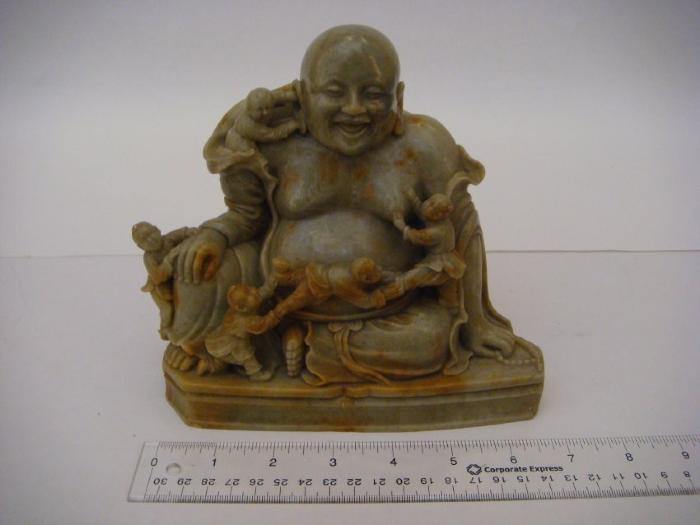1988.02.25
Laughing Buddha
18th century (Date created)
Steatite
Carving
Sculptures
6.5 in L x 4 in W x 7.5 in H(Object)
Chinese
This statue represents a seated Buddha with five children climbing on him. This is an example of how fine stone was used as a substitute for jade to make artifacts since large pieces of jade were rare and precious. Because stone is softer than jade, it is easier to work on. This is a good piece because of its fine craftsmanship. The Buddhist religion recognizes three bodily states of the BUddha: the Dharma body type (ineffable and unrepresentable), the Niramanakaya body type (the human or individualized envelope), and the Sambhogakaya body type (the body made up of traditional, symbolic characteristics). This last body form is what one usually sees when looking at a Buddha figure; in this work, the Buddha is unusually portrayed in his "common" or human form as Prince Siddhartha. Buddhists refer to Siddhartha Gautama as the Buddha ("Enlightened One") or Sakyamuni ("Sage of the Sakyas") . He was born in Kapilauastu, India, ca. 563 B.C. to the head of the Sakya warrior caste. At the age of 29, he renounced his materialistic way of life and sought peace, enlightenment, and release from the cycle of rebirths. According to tradition, he attained the Great Enlightenment while sitting under a bo tree in Buddh Gaya. Sonn after, he gathered a body of disciples at Benares and organized them into a monastic community known as the sangha Nirvana. After forty-five years of missionary work, he died in Kusinagave (ca. 483 B.C. ) as a result of eating contaminated pork. (Mary C. Rebscher)
In Collection
Anonymous Gift (see Notes)
Please note that cataloging is ongoing and that some information may not be complete.
